The growing concerns of coral bleaching due to the ongoing marine heat wave across South Florida, the Gulf of Mexico, and the greater Caribbean led scientists at NOAA’s Atlantic Oceanographic & Meteorological Lab (AOML) to return to Cheeca Rocks on July 31st and August 1st, 2023.
As an inshore reef within the Florida Keys National Marine Sanctuary and a vital long-term climate monitoring site for the National Coral Reef Monitoring Program, Cheeca Rocks demonstrated persistence in the wake of the 2014 and 2015 bleaching event and is known to have some of the highest coral coverage compared to surrounding offshore reefs, but what NOAA scientists found was bleak.
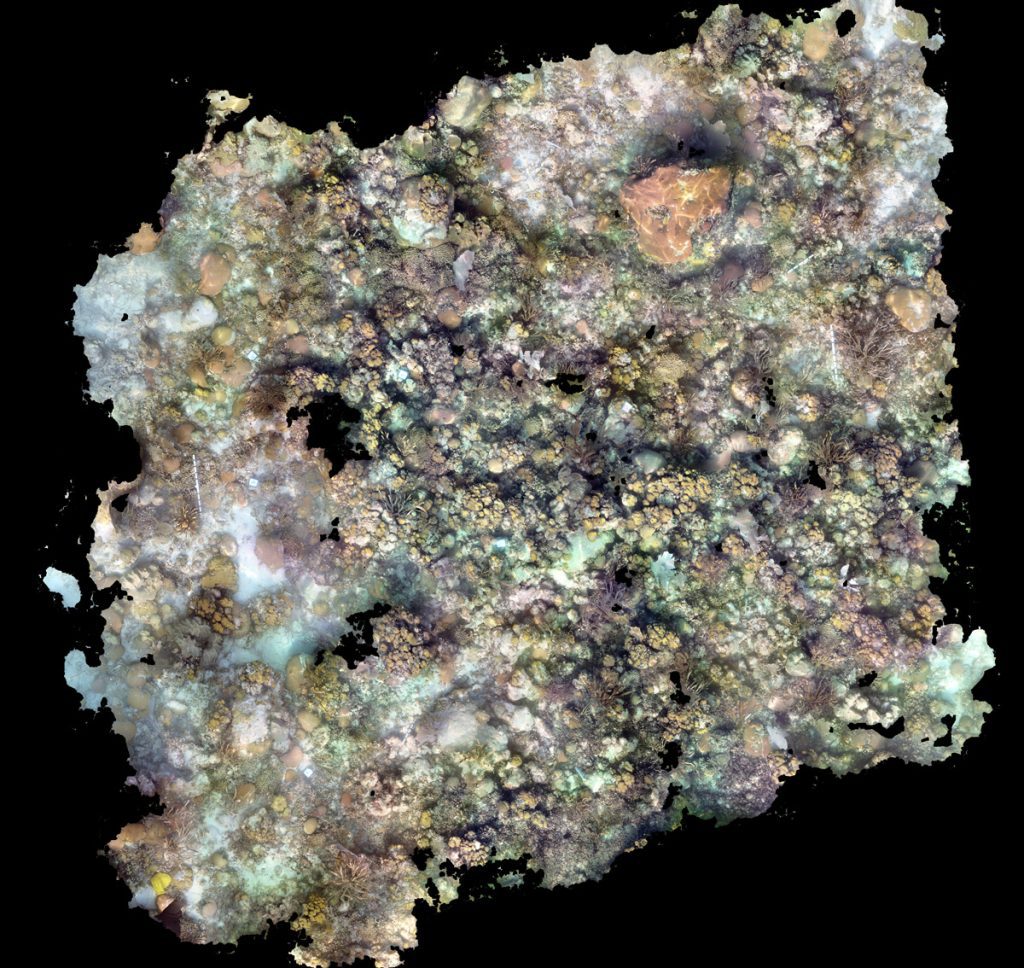
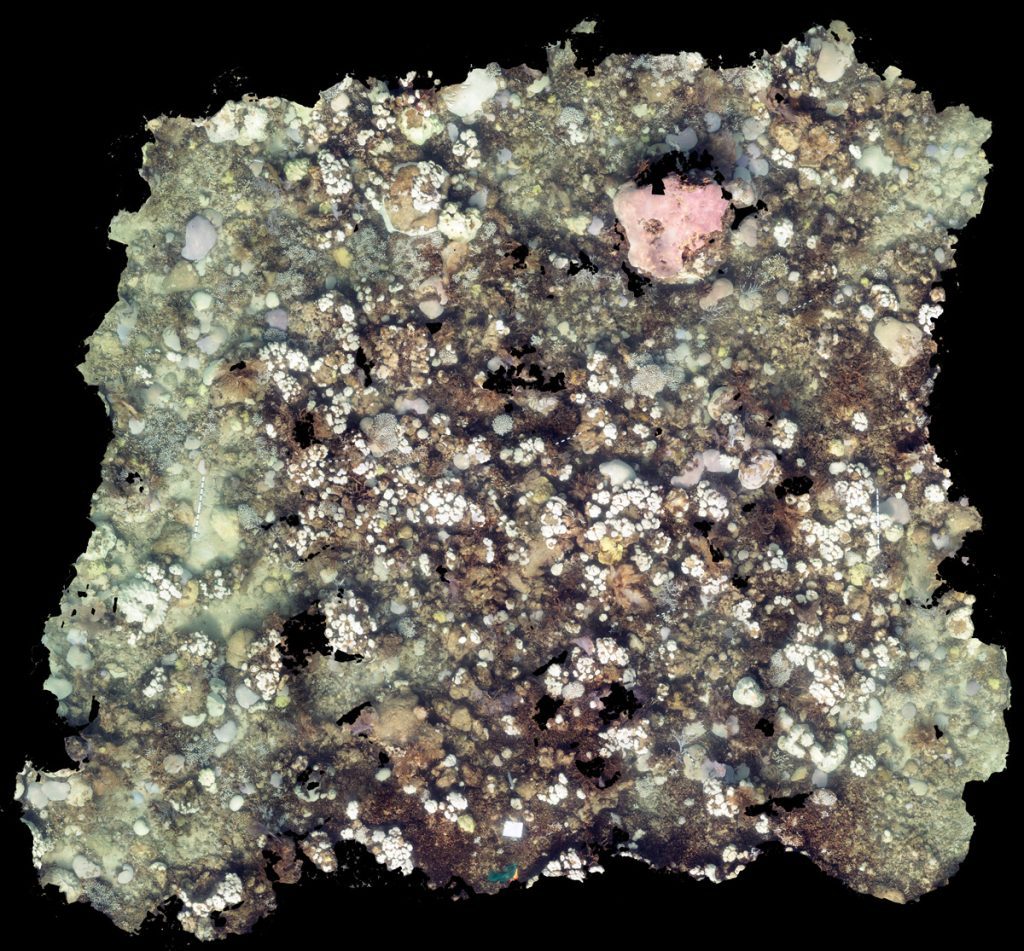
Orthomosaic maps are composite images created by “stitching” together still images using reference points in each image to create a single composite.
“I’ve never seen anything like it,” said Ian Enochs, Ph.D., Research Ecologist and Lead of AOML’s Coral Program. “The corals at our primary climate monitoring reef site, Cheeca Rocks, are completely bleached,” he explained. “No single coral is untouched. It’s shocking.”
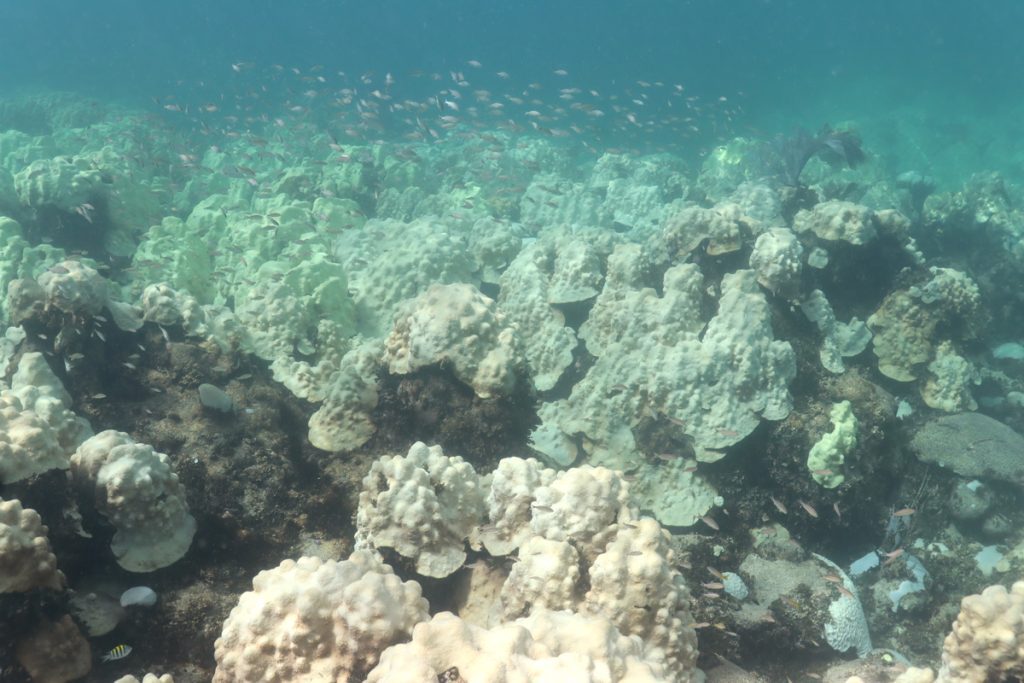
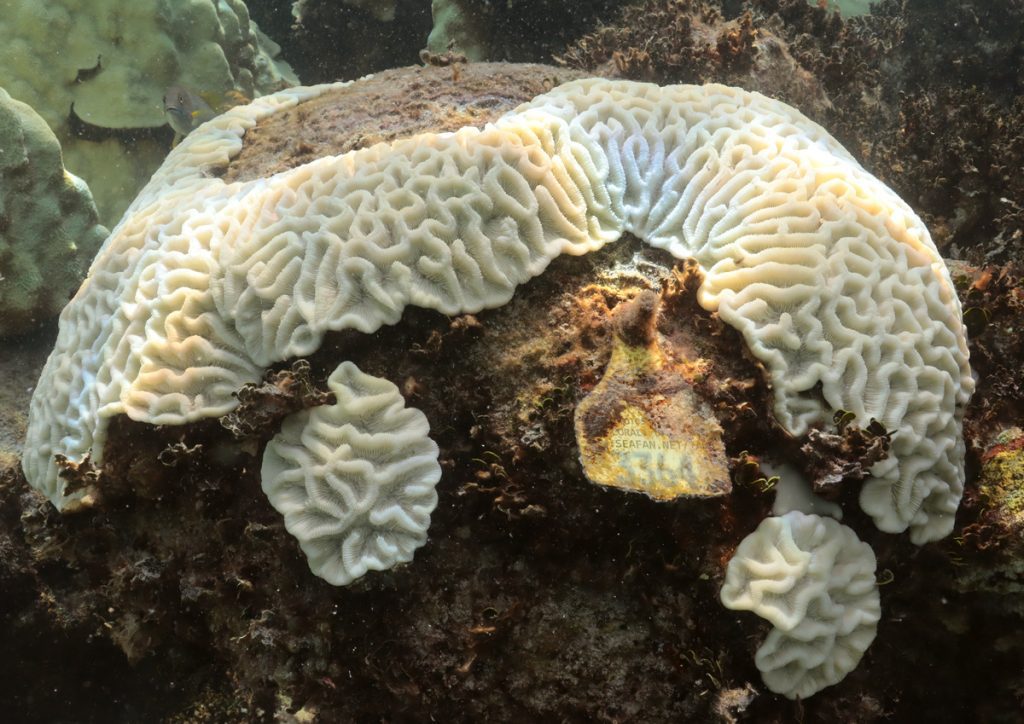
It is essential to note that bleaching does not mean mortality. Corals are able to recover from a bleaching event as long as the physical stress, in this case sustained, above average sea surface temperatures, is reduced to a level that allows the algal symbiont population to reestablish itself.
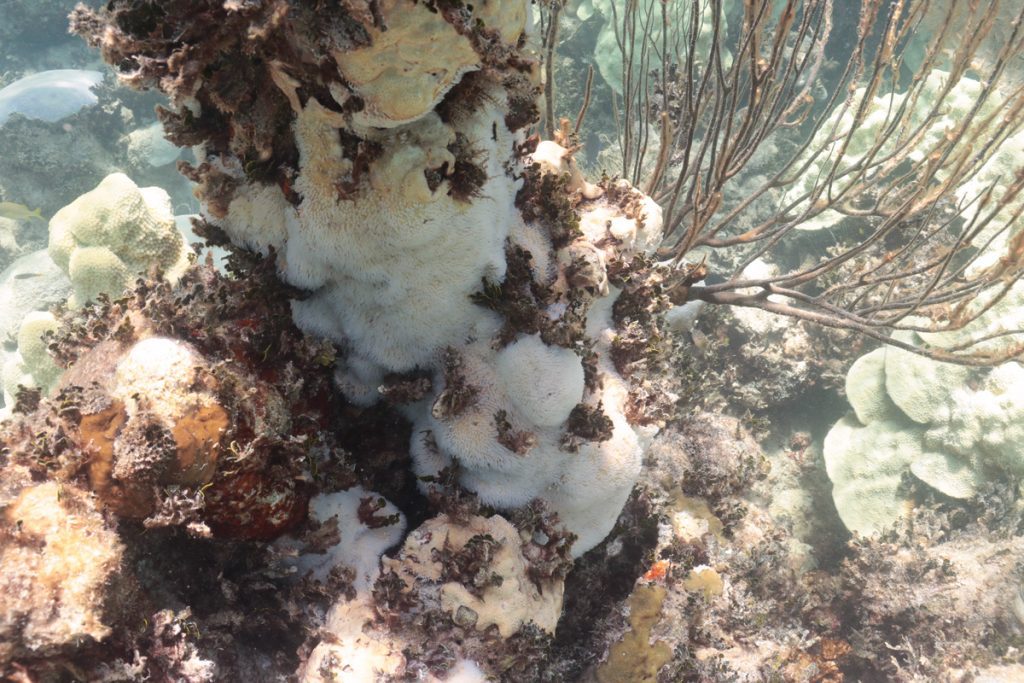
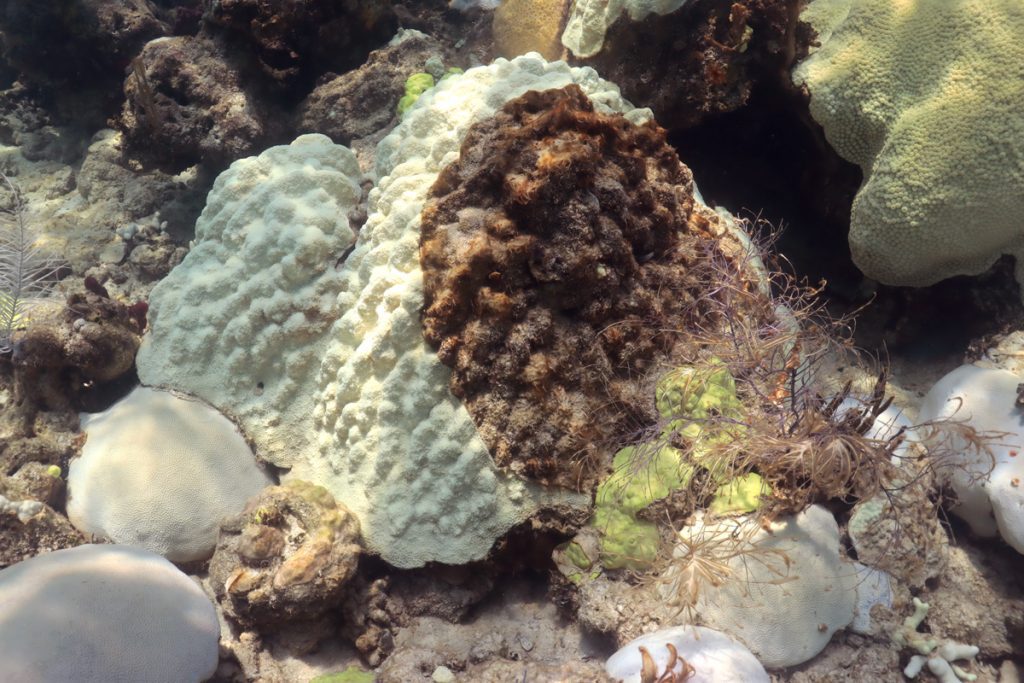
What is concerning about the widespread bleaching at Cheeca Rocks, however, is the timing. “I’m worried because it’s so early in the season, and they may continue to be stressed for some time,” said Enochs. “This is more bleaching than I’ve seen, earlier than I’ve ever seen it. We still have a warm South Florida summer ahead of us, which means more stressful conditions.”
On average, August is the hottest month for South Florida. However, the mass bleaching at the monitoring site is due to higher than average sea surface temperatures brought on by the ongoing marine heat wave, which current predictions suggest could persist in the southern Gulf of Mexico and the Caribbean through October.
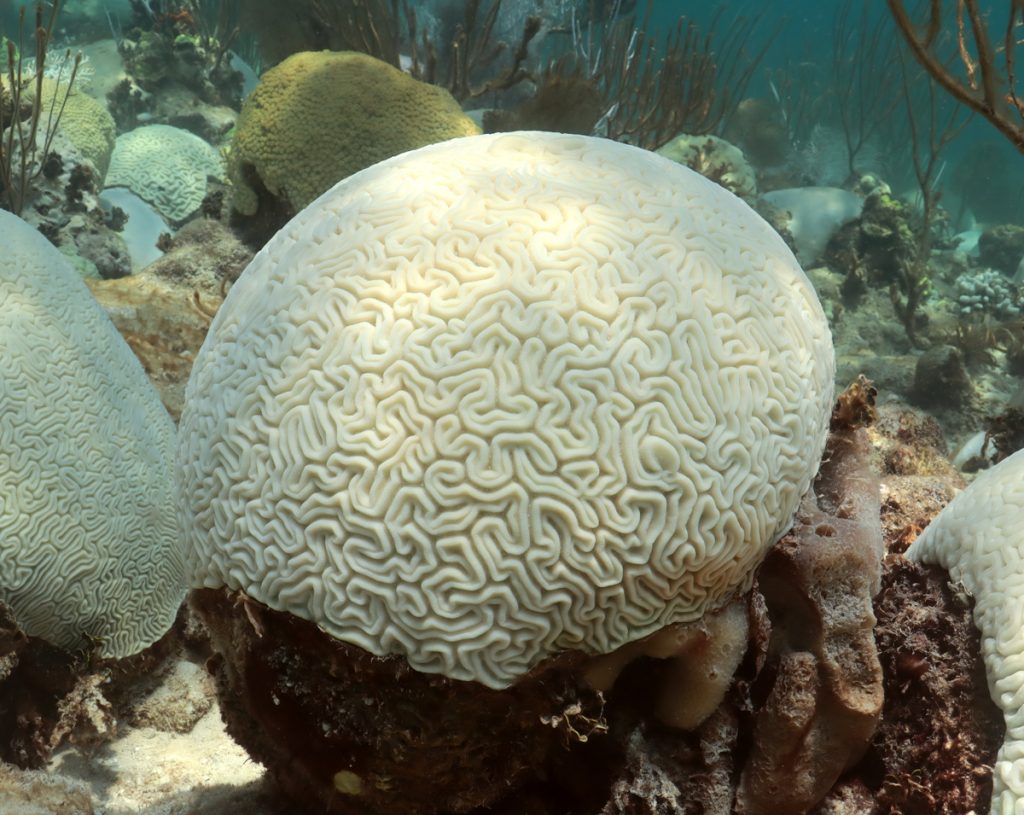
While such sustained high temperatures could lead to significant coral mortality at the monitoring site, what happens in the coming months will determine the true outcome of the mass bleaching event currently being observed. Coral reefs, like all natural ecosystems, are complex. In the Port of Miami, research conducted by AOML and the Cooperative Institute of Marine & Atmospheric Studies found that some “urban” corals may be more resilient to environmental stressors due to their consistent exposure to high human activity.
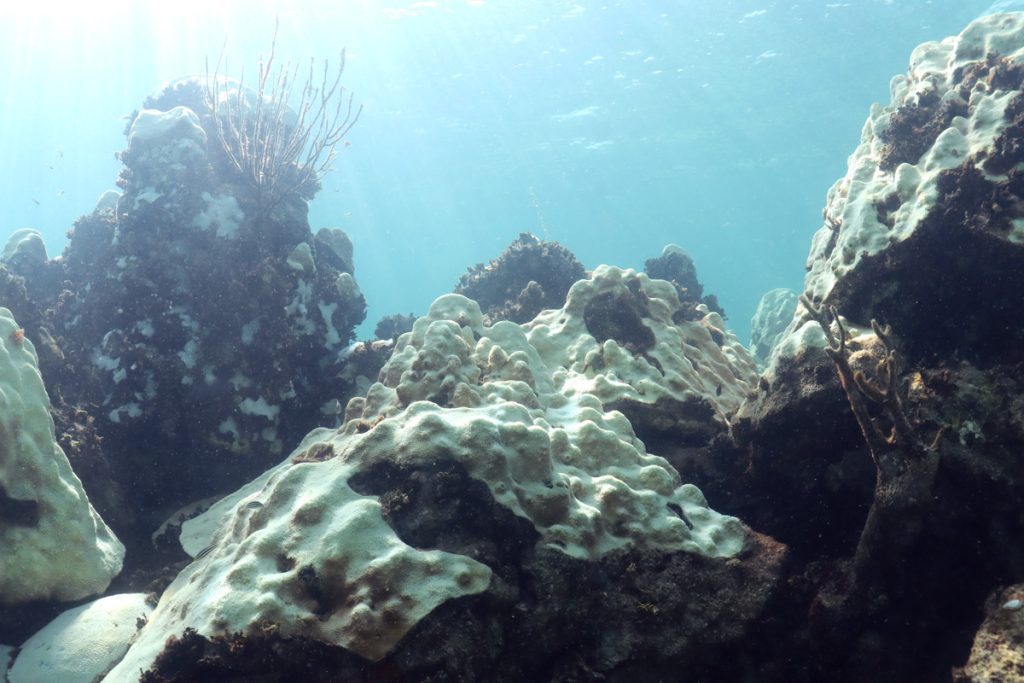

At AOML’s Experimental Reef Lab (ERL), located at the University of Miami’s Rosenstiel School for Marine, Atmospheric, and Earth Science, doctoral candidate Allyson DeMerlis and the rest of the AOML Coral Program have found that repeatedly exposing coral fragments to high temperatures may enhance their resilience to extreme heat.
A study led by CIMAS Scientist Ana Palacio, Ph.D. demonstrated that corals in the eastern tropical Pacific highly exposed to the 1982-83 El Niño event and associated heat wave were highly susceptible to heat stress and experienced high mortality rates but more resistant to heat stress with lower mortality in the following 1997-98 and 2015-16 heat waves.
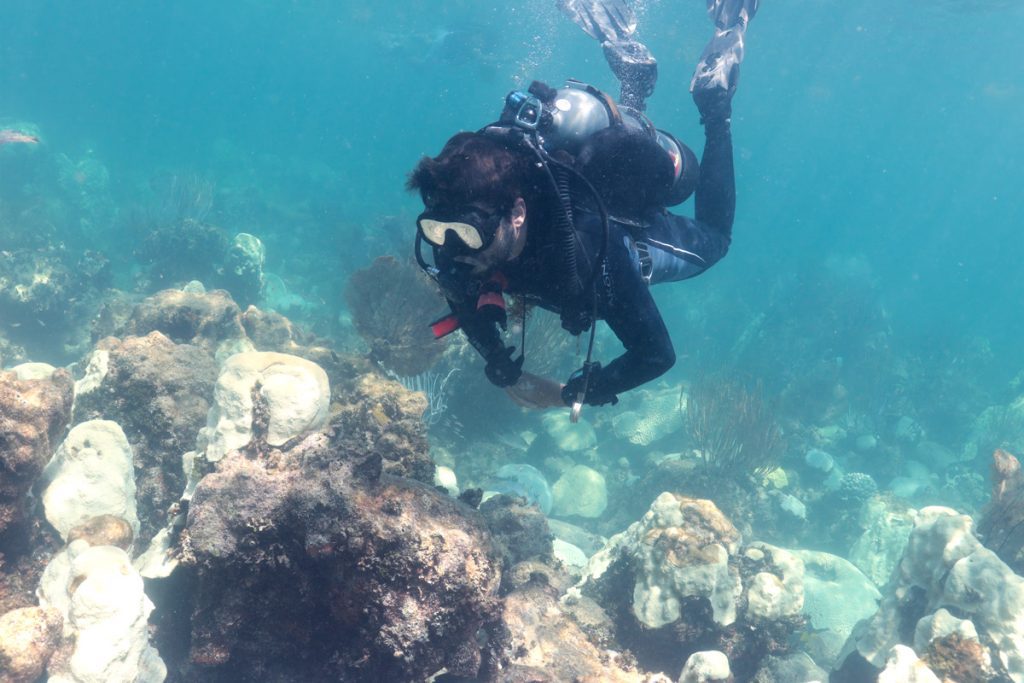
The widespread bleaching observed at Cheeca Rocks is of great concern for AOML scientists who have spent over a decade monitoring and studying the site, but continued monitoring efforts in the coming months will determine the true outcome. Ongoing monitoring efforts by AOML and our partners are crucial to understand environmental stressors and their intensity in order to enhance coral resilience and restoration.
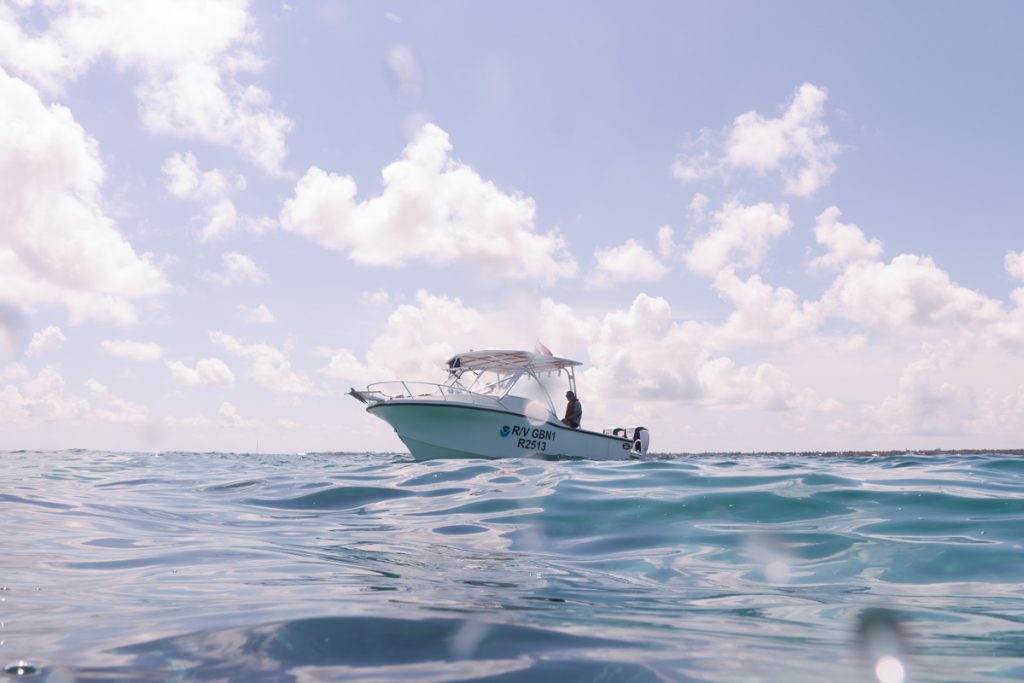
Ultimately, it is as essential to understand the full scope of the challenge faced by these crucial ecosystems as it is to remain encouraged by the innovation and ongoing efforts of scientists to find solutions.
